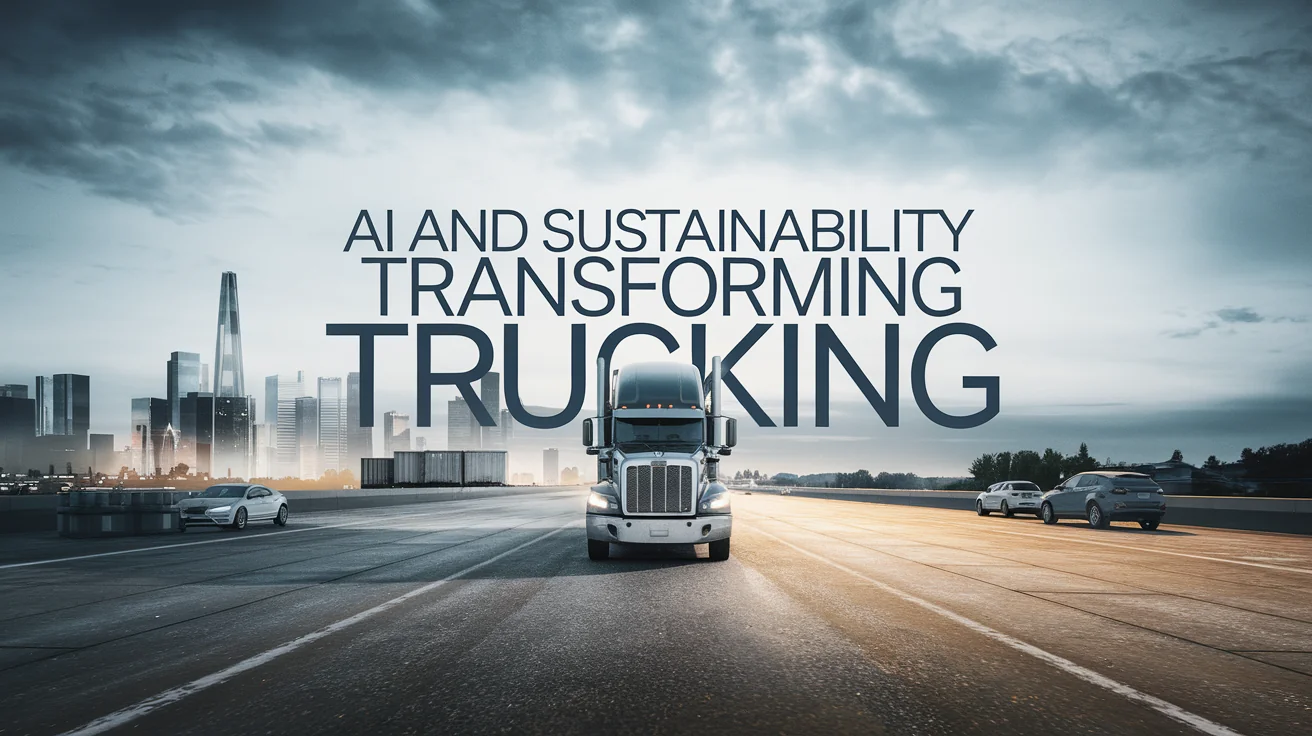AI and Sustainability Transforming Trucking

The integration of artificial intelligence (AI) and sustainability is becoming a transformative force in the trucking industry. As revealed in a recent episode of Loaded and Rolling, hosted by Thomas Wasson, discussions with EROAD’s Chief Data Science Officer Dean Marris and Chief Sustainability Officer Craig Marris underscore the critical role of technology in bridging the gap between sustainability aspirations and actionable strategies within fleets.
The Messy Middle of Sustainability
In their conversation, Marris and Wasson explored the complexities of transitioning to sustainable practices in trucking. The landscape of sustainability and AI is intertwined, with both elements redefining possibilities for fleets aiming to reduce costs and emissions while maintaining performance standards. This intersection is indispensable for companies looking to innovate in their routes and operations.
Harnessing Digital Twin Technology
Digital twin technology stands out as a pivotal tool for fleets evaluating the shift to alternative fuels and electric vehicles. Craig Marris highlighted that these simulation models enable companies to predict the outcomes of their sustainable transitions without the immediate financial burden. By integrating real routing data from telematics and transportation management systems, digital twins facilitate scenario modeling, aiding fleets in understanding feasibility and planning accordingly.
These advanced simulations provide invaluable insights into which routes are suitable for electric vehicles and what charging infrastructures are necessary, allowing for a more strategic approach to sustainability transitions. The flexibility of digital twins to learn from real-world data—encompassing variables such as traffic and weather—enhances their effectiveness in decision-making.
AI’s Role in Operational Efficiency
AI applications are significantly influencing everyday operations within the supply chain, with one notable area being the reduction of empty miles. Current transportation management systems and freight marketplaces leverage AI to create optimal load-matching scenarios. Rearranging backhaulers based on live truck data achieves higher efficiency rates, showcasing the potential of AI when combined with resources like EROAD’s hours-of-service data.
In cold chain management, EROAD’s CoreTemp product utilizes advanced algorithms for real-time temperature monitoring, allowing shippers and receivers to ensure product quality while minimizing waste. By algorithmically tracking critical metrics and product conditions, intelligent solutions like CoreTemp drive reductions in spoilage and logistical inefficiencies—all crucial aspects of a more sustainable approach.
Innovations in Safety with AI
The advancements in AI also extend to safety improvements within the trucking sector. Modern multicamera systems employed in vehicles utilize onboard AI to detect objects in real-time. This technology enhances safety, particularly in urban settings where sideswipe incidents are frequent, by monitoring driver behaviors and identifying potential distractions. The significance of these systems is reflected in their ability to exonerate drivers during incidents, pointing to a reduction in liability for fleets.
The Power of Collaboration and Data Sharing
Collaboration among industry stakeholders is increasingly recognized as essential for driving sustainability efforts forward. Regulatory changes, notably in regions like California requiring emissions reporting by larger companies, have prompted a shift toward greater transparency and data sharing along the supply chain. This willingness to cooperate emerges as a vital factor not only in regulatory compliance but also in enhancing overall sustainability initiatives.
As the trucking industry navigates the complexities between traditional operations and a more sustainable future, the synergistic integration of AI and sustainability is proving beneficial on multiple fronts. Through innovative tools like digital twins, AI-driven operational efficiencies, advanced safety systems, and collaborative approaches to data sharing, leaders in the field, such as EROAD, are empowering fleets to transition confidently towards a sustainable future.
For more insights about EROAD and its initiatives, click here.